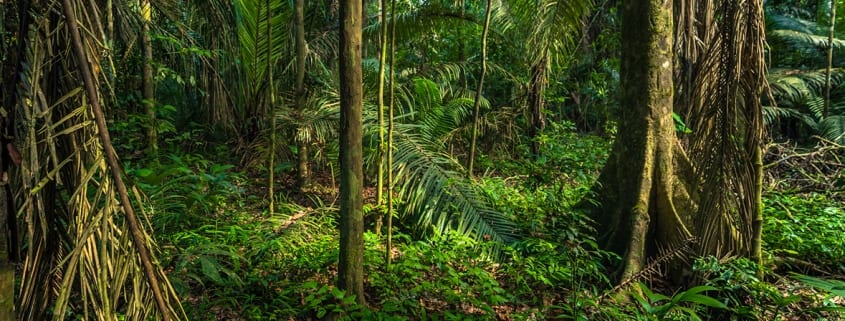16,000-Acre Yellow-eared Parrot Corridor Established in Colombian Andes
In April 2009, Rainforest Trust was presented with an urgent appeal to purchase critically endangered habitat in Colombia, home to five endangered parrot species at imminent risk of extinction. Recognizing the critical importance of this appeal, a Rainforest Trust donor–Frank Friedrich Kling from Illinois–committed to funding half the acquisition cost as part of a matching gift campaign.
Colombia’s Andes Mountains are home to a highland cloud forest that supports an exceptional amount of biodiversity and numerous endangered species as well as providing a plentful supply of water resources to communities, farmers, and cities in the region. Five endangered parrot species are present in this forest, including two of the rarest parrots in the Americas: the Indigo-winged Parrot and the Yellow-eared parrot. The Critically Endangered Fuertes’s Parrot hadn’t been seen for 91 years until it was rediscovered by our partner ProAves Colombia in 2002. Today, there are less than 200 individuals remaining in the entire world, and none are held in captivity. An extremely specialized species, the Indigo-winged Parrot feeds on mistletoe and other fruits and can not survive behind bars.
This is also the case for the Yellow-eared Parrot that have such tight social bonds between families and groups that when captured they almost invariably die. For example, in the early 1990s illegal trappers in Ecuador caught 20 Yellow-eared parrots and placed them in captivity. Within two weeks every bird had died. There are no options for either species–their native habitat has to be protected if they are to survive.
Other rare and endemic species found here include the endangered Mountain Wooly Tapir and the Spectacled Bear, both of which are frequently targeted by hunters.
The rich volcanic soils of the Central Andes support the highest concentration of rural farmers and residents in all of Colombia. As a result, less than five percent of the original native forest remains standing. Every year, more forest cover is lost as ranchers buy and clear more land for cattle ranching and agriculture.
For eight years, our partner ProAves Colombia has surveyed and studied the cloud forest parrots in the Central Andes of Colombia (see map of site) with the support of Fundación Loro Parque. This comprehensive research project identified key areas and threats that permitted targeted and effective conservation actions to be undertaken.
The generous matching support offered by Frank Kling persuaded many Rainforest Trust supporters to donate to this important appeal, who together allowed our partner to acquire 7,448 acres. Our donors also helped leverage additional support matching support from American Bird Conservancy, IUCN Netherlands/SPN in conjunction with the Netherlands Postcode Lottery, Conservation International, and Robert Wilson, which allowed a further 2,614 acres to be acquired.
In total, our partner acquired and saved 10,062 acres on the eastern slope of the Central Andes of Colombia which connect to a further 6,653 acres of cloud forest already under their protection on the mountain chain’s western flank.
Spanning both slopes of the Central Andes and encompassing an extraordinary diversity of threatened and endemic flora and fauna, we have established the 16,715-acre, 14-mile Yellow-eared Parrot Conservation Corridor so that today, the Yellow-eared Parrot and many other threatened species have a sanctuary to call home. The corridor also provides important economic benefits. Support from Fundación Loro Parque has allowed ProAves to train and hire six local people to manage and protect the Corridor. With American Bird Conservancy, ProAves, and the local Muncipality of Roncesvalles, we hope to develop an ecotourism initiative that will provide a sustainable income stream for the corridor as well as a stimulus for the local economy. Importantly, the corridor protects four major watersheds that ensures a clean and plentiful supply of water of over 20,000 people and numerous farms in the region.
Many thanks to all our donors who contributed to establish the corridor. We could not have done this without your help.





